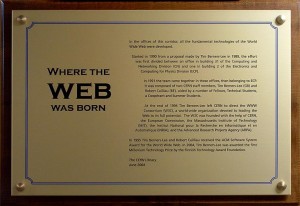The final package of the Leahy-Smith America Invents Act (H.R.1249, pdf) will enter into force on 16 March 2013 (for a list of amendments and their effective dates, see here). By this date, the most significant amendments of the new Act will enter into force, namely the transformation from the traditional first-to-invent regime to the new first-inventor-to-file regime.
Besides reducing the USPTO’s backlog of approx. 680.000 patent applications and improving patent quality, the main objective of the America Invents Act is to harmonise the US patent system better with international patent law standards and by that facilitate second filings of US applicants in foreign jurisdictions.
This is indeed a brilliant idea, not only for US applicants but also for European applicants and practitioners, as it will align the US system closer with the European patent system. However, event for those legal instruments that are clearly adapted to the European point of view, important differences remain. Some of those tiny differences that may have a huge impacts on practice are outlined below:

The painting "Sonntag der Bergbauern" of Ernst Ludwig Kircher (1880-1938) is hanging above the cabinet table in the Berlin Office of the Federal Chancellor.
Recently, the Federal Ministry of Justice under Sabine Leutheuser-Schnarrenberger (Liberal Democrats/FDP, @sls_bmj) submitted a proposal for amendments to patent law and other laws of intellectual property (cf Draft Amendment, in German) that were approved this week by the Federal Cabinet. To enter into force, the Amendment still needs to be approved by the Federal Parliament (“Bundestag”) which, however, is only a formality given the present clear parliamentary majority.
The amendments to the Patent Act (Patentgesetz, PatG) aim at reducing bureaucracy and providing for more flexible and cost-efficient proceedings before the German Patent and Trademark Office (DPMA/GPTO), cf. press release (machine translation).
One important measure to improve cost- and procedural efficiency at least for the Office was the introduction of the electronic case file system ElSA which enables the GPTO to process patent and utility model files fully electronically. The present Amendment regulates inter alia the – long overdue – public access to the electronic ElSA files in order to provide for some cost- and procedural benefits to applicants and attorneys as well.
Industrial Revolution 2.0: How the Material World Will Newly Materialize
3D printing is a form of additive manufacturing technology where a three-dimensional object is created by laying down successive layers of material. Since 2003 there has been large growth in the sale of 3D printers. Additionally, the cost of 3D printers has declined.
Just in these days and within the framework of the London Design Festival, the London Albert & Victoria Museum is staging an exhibition ‘Industrial Revolution 2.0: How the Material World will Newly Materialise’ . The exhibition is a showcase displaying works made by 3D printing by Stephen Jones, Patrick Jouin, Iris van Herpen, and many others. Renowned New York-based design gallerist and curator Murray Moss has collaborated with industry provider Materialise, Belgium to create a special exhibition which pushes the parameters of 21st century 3D printing. A series of unique ‘printed’ works, using cutting edge laser and digital technologies to build three-dimensional objects, are placed throughout the Museum’s most important galleries, wittily referencing eight of the Museum’s key pieces and spaces; see also this report on i.materialise.
With regard to patent law, 3D printing taken as such appears to bear no particular implications out of the normal routine: We may assume that professional providers like Materialise NV and others know what they are doing and have some legal or patent department giving suitable advice.
However, as 3D printing technologie gets mature, two developments are foreseeable:
- In a first stage, perhaps to be experienced in a few years of time, heavy-duty 3D printing equipment might be generally available but too expensive to be bought by broader consumer circles. Maybe that costs for such devices will be comparable to large professional photocopying machines. If such assumption should become reality, there might be room for new business models of 3D copy shops: Small businesses loacted in your town around next corner where you can show up with a memory stick or something like that storing a 3D model of some object you would like to have produced. Perhaps such shop even might provide 3D scanning services as well; in such case the customer simply shows up with some 3D object in his pocket and goes away with one or more exact replicas thereof.
- In a second stage, costs of 3D printing equipment might drop to levels comparable to today’s laser printer devices. Maybe that 3D printers will be heavily cross-subsidised by surcharges on printing raw materials in the same manner as 2D printers today are subsidised by expensive ink or toner cartridges. This would mean that consumers can produce a broad range of 3D objects at home without need to contract any external service provider.
Of course, there is some hype in the current reporting on 3D printing: For many practical applications, not only the 3D shape is of relevance but also more elaborate characteristics, e.g. in view of a specific electrical conductivity, hardness, heat-resistance and/or elasticity. Those who fear that in the age of 3D printing everyone might be able to produce firearms at home might be reminded that the functionality of a gun is not determined by its 3D shape alone; it must also bear the heat and the enormous forces of the explosion of the propellant.
But nevertheless surely there will be many useful real world applications of 3D printing, most of them perfectly legal, some, of course, blatantly illegal or serving illegal ends. There are, for example, reports saying criminals stole more than $400,000 using ATM skimming devices made from high-tech 3D printers.
But what we might see, if the above-noted assumptions are true, is that another front of legal battles will be opened where John Doe and Max Mustermann risk entanglement with Intellectual Property laws.
In the first half of the 20th century, virtually no private individual living a mainstream-style life ever was in risk of infringing copyright laws: Printing presses were as expensive as, later in the century, radio and TV broadcasting equipment and out of reach for private consumers. Mass media were, due to economic necessity, owned by larger corporations which could afford to take legal advice and which could held liable easily in case of wrongdoing.
But in the age of PCs connected to the Internet we today see an epic battle of rights holders attempting to defend and to enforce their exclusion rights in the field of Copyright in the courts against countless private individuals engaging e.g. in file-sharing activities at home on the basis of their own PC and Internet infrastructure.
The PC and the Internet are also the tools which even today might bring individuals in conflict with patents on computer-implemented inventions or software patents. However, contrary to many fears of open source advocates, up to now the mainstream of litigation e.g. in the smartphone patent litigation business is directed against major players in that market, not against more or less private individuals. Exceptions are a few commercial developers creating smartphone apps sued by Lodsys; however, the particulars of such cases appear to hint that the main direction of attack was meant to be platform providers like Apple or Google.
Things might again change in an age where 3D printing techniques have matured and are cheaply in everybody’s reach. 3D copy shops will probably not benefit from any exemptions in patent law privileging private and non-commercial use of patented technologies as they are present e.g. in national German patent law. I don’t talk here on patents covering the 3D scanning / printing processes and devices (these problems should be dealt with by the manufacturers of such equipment) but on patents (and, by the way, also registered designs) infringed not by the technology provided in the 3D printing shop but by the specific 3D objects or object models brought in by the non-commercial customers. Will rights holders attempt to shut down such small 3D copy shop businesses by filing lawsuits on the basis of secondary patent infringement? Anyway, consumer-oriented 3D copy shops would face utter difficulties in assessing if replicating some object brought in by a customer infringes third party’s IP rights if they were legally required to do so.
Even if the 3D technology gets operated at home by the consumer, problems remain. For example, the German patent exemption covers only acts that are cumulatively of private nature as well as non-commercial. Excange of money is not a necessary precondition to get out of the scope of this exemption. For example, producing a small lot of object for free distribution amongst friends might, under some circumstances, be considered lying outside the scope of the German private-use patent infringement exemption.
Will we see in, say 10 years from now, a discussion on liability of ISPs for not filtering out 3D model data utilisable for 3D printing if they are suspected of infringing patent / design rights?
How (Not) To Get Rid Of Software Patents
Today we have seen general elections to the Berlin City Parliament. Perhaps you may know that Berlin is not only a big city with some 3.5 Million inhabitants which also is the capital of Germany. In addition, Berlin constitutes one of the 16 states of Germany. Hence, Berlin City Parliament plays its role not only in the context of the City but also with regard to the federal structure of Germany.
At the time of writing of this posting, exit polls show that the Berlin chapter of the German Pirate Party will surpass the 5% quorum by a quite sensational 8-9% share on votes. This result shows that the mood especially of younger voters and first time voters is changing, moving away from all of the established parties including the Greens and the Left (Die Linke). At the occasion of the last Germany-wide general elections to the federal parliament in September 2009, the Pirate Party had got less than 2% of the votes. Many voters are reluctant to cast their vote for any party that is well below the 5% hurdle because of the high probability that voting for such party has no power to change anything. However, now, after the Berlin chapter of the German Pirate Party not only got over the 5% quorum by some narrow margin but obtained a sensational surplus of up to 4 percent points over the 5% hurdle, such reservations dwindle and, hence, I expect to see them in more State Parliaments of other Bundesländer in the coming years. And, like it or not, taking the history of the other German grassroots party, the Greens, as a precedent, the Pirates might well sit in the lower chamber Bundestag of the German Parliament in 2017 if they miss the 5% hurdle in the next general elections scheduled for fall 2013.
What does this mean with regard to Intellectual Property politics and business?
Continue reading »
I. RECENT CASE LAW
In the past two years we have seen a number of quite interesting decisions of the German Federal Court of Justice (Bundesgerichtshof; BGH) dealing with patent-eligibility of software-related inventions.
The first decision in the row was X ZB 22/07 („Steuerung für Untersuchungsmodalitäten“, “Control of Examination Modalities”) of 20 January 2009, in which the BGH analysed the circumstances under which an embedded software represents statutory subject-matter (see comments). In this decision the BGH sketched a two-step approach to examine whether or not an invention is sufficiently “technical” to qualify for patent eligibility:
- Is the subject-matter a “technical invention” as required by § 1 I PatG ?
- Does the invention fall under the exclusion of a “computer programs as such” as requited by § 1 III No. 3, IV PatG ?
An additional third step completes the examination scheme:
- Do the technical features render the invention novel and inventive over prior art?
The k/s/n/h::law blog
Some of the patent attorneys of the KSNH law firm have joined their efforts to research what is going on in the various branches of IP law and practice in order to keep themselves, their clients as well as interested circles of the public up to date. This blog is intended to present results of such efforts to a wider public.
Blog Archives
- November 2013 (2)
- October 2013 (1)
- September 2013 (1)
- August 2013 (2)
- July 2013 (3)
- June 2013 (5)
- March 2013 (5)
- February 2013 (4)
- January 2013 (5)
- December 2012 (5)
- November 2012 (5)
- July 2012 (5)
- June 2012 (8)
- May 2012 (5)
- April 2012 (3)
- March 2012 (4)
- February 2012 (5)
- January 2012 (6)
- December 2011 (12)
- November 2011 (9)
- October 2011 (9)
- September 2011 (4)
- August 2011 (7)
- July 2011 (4)
- June 2011 (1)
Blog Categories
- business methods (6)
- EPC (7)
- EPO (12)
- EU law (92)
- ACTA (8)
- CJEU (4)
- Comitology (1)
- competition law (2)
- Enforcement (6)
- EU Unified Patent Court (62)
- FTA India (1)
- TFEU (2)
- Trade Marks (5)
- European Patent Law (37)
- German Patent ACt (PatG) (1)
- German patent law (5)
- Germany (6)
- Pirate Party (3)
- International Patent Law (4)
- PCT (2)
- IP politics (10)
- licenses (2)
- Litigation (5)
- Patentability (7)
- Patents (12)
- Piratenpartei (2)
- Software inventions (10)
- Uncategorized (9)
- Unitary Patent (24)
- US Patent Law (4)
Comments
- kelle on Germany: Copyright Protection More Easily Available For Works Of “Applied Arts”
- Time Limits & Deadlines in Draft UPCA RoP: Counting The Days - KSNH Law - Intangible.Me on Wiki Edition of Agreement on Unified Patent Court Agreement (UPCA)
- Time Limits & Deadlines in Draft UPCA RoP: Counting The Days | ksnh::law on Wiki Edition of Agreement on Unified Patent Court Agreement (UPCA)
- Wiki Edition of Agreement on Unified Patent Cou... on Wiki Edition of Agreement on Unified Patent Court Agreement (UPCA)
- European Commission Takes Next Step Towards Legalising Software Patents in Europe | Techrights on EU Commission publishes Proposal of amendend Brussels I Regulation for ensuring Enforcement of UPC Judgements
Blogroll
- 12:01 Tuesday
- America-Israel Patent Law
- Anticipate This!
- AwakenIP
- BlawgIT
- BLOG@IPJUR.COM
- BP/G Radio Intellectual Property Podcast
- Broken Symmetry
- Class 46
- Director's Forum: David Kappos' Public Blog
- Gray on Claims
- I/P UPDATES
- IAM Magazine Blog
- Intellectual Property Intelligence Blog
- IP Asset Maximizer Blog
- IP CloseUp
- IP Dragon
- IP Watch
- IP Watchdog
- IPBIZ
- ipeg
- IPKat
- ITC 337 Law Blog
- Just a Patent Examiner
- K's Law
- MISSION INTANGIBLE
- Patent Baristas
- Patent Circle
- Patent Docs
- Patently Rubbish
- PatentlyO
- Patents Post-Grant
- Reexamination Alert
- SPICY IP
- Tangible IP
- The 271 Patent Blog
- The Intangible Economy
- THE INVENT BLOG®
- Think IP Strategy
- Tufty the Cat
- Visae Patentes
The KSNH blogging landscape


This blog and the German-language sister blog k/s/n/h::jur link to the two popular and privately run blogs IPJur und VisaePatentes and continue their work and mission with a widened scope and under the aegis of our IP law firm.
ksnhlaw on Twitter
- No public Twitter messages.
 KSNH::JUR Feed (german)
KSNH::JUR Feed (german)- Ist Verschlüsselung passé? September 6, 2013Auf verschiedenen Feldern beruflicher Praxis ist dafür zu sorgen, dass Kommunikation vertraulich bleibt. Die trifft beispielsweise für Ärzte zu, aber auch für Anwälte, darunter auch Patentanwälte. Einer der zahlreichen Aspekte, die in diesem Zusammenhang eine Rolle spielen, ist die Technik, um die Vertraulichkeit beruflicher Kommunikation sicherzustellen. Wa […]
- EU-Einheitspatent: Demonstrativer Optimismus und Zahlenmystik allerorten – Naivität oder politische Beeinflussung? June 26, 2013Nach mehreren vergeblichen Anläufen zur Schaffung eines EU-weiten Patentsystems wurde 1973 als Kompromiss das Europäische Patentübereinkommen unterzeichnet, welches unabhängig von der seinerzeit noch EWG genannten Europäischen Union System zur zentralisierten Patenterteilung mit nachgeordnetem Einspruchsverfahren durch das Europäische Patentamt schuf. Wie wi […]
- Moderne Zeiten oder: DPMA und Patentgericht streiten über die elektronische Akte April 25, 2013Bekanntlich hat das Deutsche Patent- und Markenamt (DPMA) im Jahre 2013 mit der rein technischen Fertigstellung der Einrichtungen zur elektronischen Akteneinsicht einen wichtigen Meilenstein seines Überganges von der Papierakte zur “elektronischen Akte” erreicht. Im DPMA werden aber bereits seit dem 01. Juni 2011 Patente, Gebrauchsmuster, Topografien und erg […]
- Gutachten zu Forschung, Innovation und technologischer Leistungsfähigkeit Deutschlands 2013 March 11, 2013Unter dem Datum vom 28. Februar 2013 ist die Bundestags-Drucksache 17/12611 veröffentlicht worden Sie trägt den Titel Unterrichtung durch die Bundesregierung - Gutachten zu Forschung, Innovation und technologischer Leistungsfähigkeit Deutschlands 2013. Die Bundesregierung legt dem Deutschen Bundestag seit dem Jahr 2008 […]
- 3D-Printing: Zum Filesharing von 3D-Modelldaten February 25, 2013In meiner kleinen zuvor angekündigten Reihe über rechtliche Aspekte des 3D Printing komme ich heute auf die Frage zu sprechen, ob die Hersteller von Gerätschaften es hinnehmen müssen, wenn Ersatztreile davon – vom Brillengestell über Smartphone-Gehäuseteile bis hin zu Rastenmähermotor-Abdeckungen – gescannt und die daraus […]
- Ist Verschlüsselung passé? September 6, 2013







